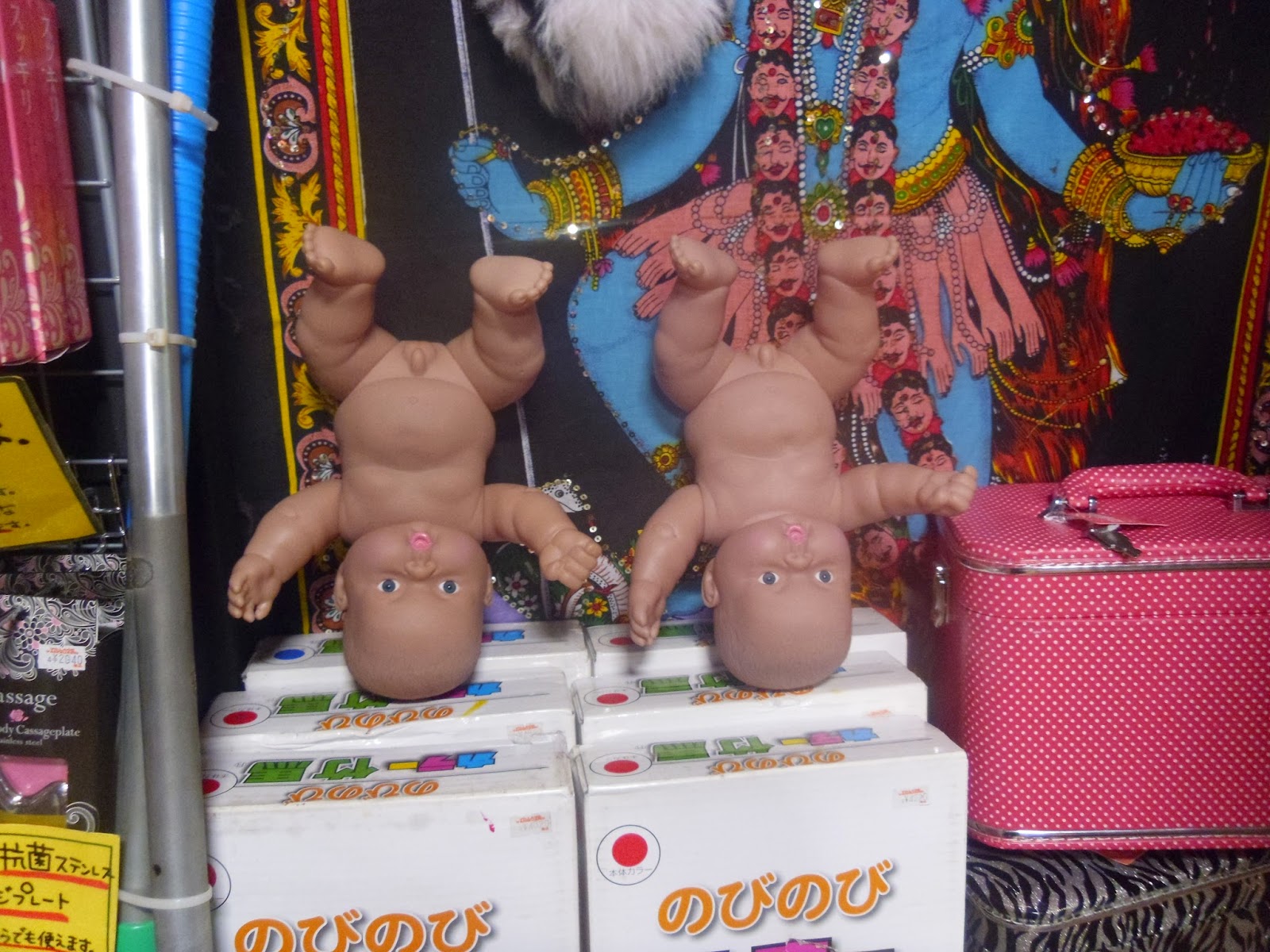"This place reminds me of China," Dario said to me, as we struggled to find somewhere to eat. "It feels like we're in the middle of nowhere."
"That's often the case, with towns this size," I had replied. "The country side feels nice, and cities are busy and dense, but anything in between is just...this."
There isn't anything particularly interesting to be said about the city of Ushiku, in Ibaraki prefecture. It's just about as boring as small cities get - and I say that as someone who had had a pretty good time in
Numata back in 2012. There's just about no apparent redeeming thing about Ushiku. Except the one thing that brought the two of us there in the first place.
A half-hour's bus ride from the train station stands the statue that once broke the record for the tallest in the world, and still stands in third place today: the Ushiku Daibutsu.
I know, it's been a strange kind of fixation I've been having to find
bigger and
bigger statues, but realistically, that would just about have to end here. Simply put, they don't quite get any bigger than this.
 |
| The Ushiku Daibutsu looming out of the fog. |
Base excluded, the Ushiku Daibutsu is 100 meters tall - two and a half-times the size of the statue of liberty and dwarfing by far any of the other large statues I've visited in Japan. Its base grants it an additional 20 meters height for a total of 120, with every 10 meters representing one of the twelve rays of light Buddha cast upon the world in order to illuminate it.
Standing atop its lotus base in a clearing that was landscaped in its honor entirely, the Daibutsu towered before us with its head in the clouds and without any other form of building in its vicinity whatsoever to compete with its size. The park-like area is filled with fields of flower and ponds of koi fish, and a little more than that, which I'll get to soon enough. The foggy day we decided to visit during proved to be both a good thing and a bad, at times obscuring the head of the statue entirely whilst reminding us of the absurd scale of the damn thing.

The statue also serves as its own museum - for a fee, visitors can remove their shoes and enter the statue from its base up to a height of 85 meters. There are small exhibits inside dedicated to explaining how and when the statue was constructed, as well as artwork and photography with the statue as its central subject. An observatory from the top of the 85 meters make it possible to see Tokyo and Mt Fuji, on a day far clearer than the one Dario and I visited on. However, what makes the inside of the Buddha most interesting is the 3rd floor: a hall completely dedicated to its 3,300 golden Buddha statuettes, which can be purchased by families.
Upon buying one of the statuettes (around 3000$ for a small one and 10,000$ for a big one respectively,) it remains where it is, but the name of the purchasing family is written on a plaque below. This made for quite a few golden Buddhas dedicated to the "Tanaka" or the "Suzuki" family.
 |
| Porco and I became quick friends. |
For people visiting the Ushiku Daibutsu with children, the area directly behind the colossal statue is actually, and I wish I was kidding, a petting zoo. Apparently, there's even a monkey in a costume that performs here, but with the paltry number of visitors on the day we went, there was no such performance to be seen. That aside, though, the petting zoo did have a bunch of rabbits, which we fed excitedly, plus a squirrel pen (squirrels being extremely rarely seen in Japan.) There was even a boar. I had never touched a boar before. All of this seemed a little weird when juxtaposed with the rest of the park, but hell, why not, I guess.
All together, despite there not being anything else than what you can find within the direct vicinity of the statue, I thought Ushiku was worth the trip. From Tokyo, Ushiku city is so easy to access that it isn't much of an investment in time or money anyhow. On top of that, the flower gardens or cherry blossoms would look breath-taking if they were in bloom, so there's a little something to be seen here no matter what time of the year it is.
 |
| For closure's sake. |
 Rikugien garden is kind of special to me! It was one of the first few places I've set foot in upon entering Japan. In a way, it's the perfect example of the Japanese standard when it comes to traditional beauty - elegant, simple, but in the end, undeniably beautiful. Fun fact: Rikugien was constructed in the early 18th century, which makes it older than the United States of America.
Rikugien garden is kind of special to me! It was one of the first few places I've set foot in upon entering Japan. In a way, it's the perfect example of the Japanese standard when it comes to traditional beauty - elegant, simple, but in the end, undeniably beautiful. Fun fact: Rikugien was constructed in the early 18th century, which makes it older than the United States of America.



.JPG)













